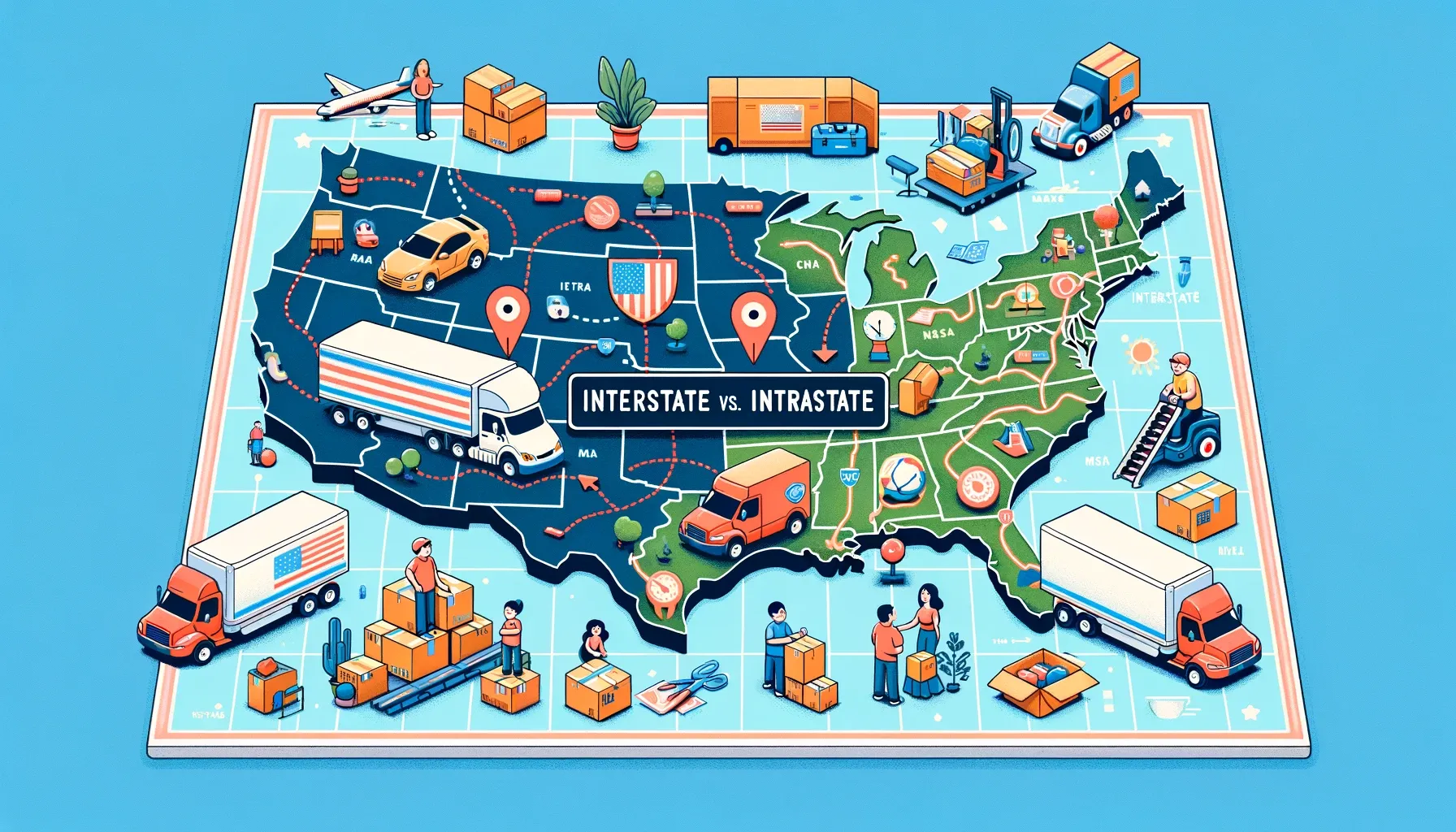Interstate vs Intrastate: Understanding the Difference and Preparing for Your Move
When planning a move, understanding the distinction between interstate vs intrastate is crucial, as each affects the planning and execution of your relocation differently.


When planning a move, understanding the distinction between interstate vs intrastate is crucial, as each affects the planning and execution of your relocation differently. Interstate moving transports goods beyond state lines, possibly to a new state or country, while intrastate moving remains within the confines of your current state but can vary in cost depending on distance and weight for longer moves[1]. This fundamental difference between interstate and intrastate relocations influences factors such as logistics, regulations, and overall costs. If you're contemplating moving across state lines or just to a new neighborhood within your state, recognizing these differences is the first step in preparing for a successful transition.
Given the complexities of moving, whether interstate or intrastate, selecting the right moving service is vital. Services like Drifted.ai revolutionize the moving process by offering a humanless quoting and booking system. You can arrange a local or long-distance move directly from your cellphone in just 10 minutes without ever needing to interact with a salesperson[2]. As we delve into the specifics of interstate versus intrastate moves, including differences in costs and preparation steps, keep in mind the importance of a trusted and efficient moving partner to ensure a smooth and stress-free move.
Defining an Interstate Move
Understanding the nuances of an interstate move is crucial for anyone planning a relocation that crosses state lines. Here's what you need to know about interstate moves:
- Regulatory Oversight: Interstate moving companies operate under the strict guidelines of the Federal Motor Carrier Safety Administration (FMCSA). This ensures they comply with federal and varying state regulations for the safe and legal transportation of your belongings across state lines.
- Required Documentation: For any interstate move, the moving company must have a valid USDOT number, facilitating tracking and compliance. This federal requirement distinguishes interstate movers from intrastate movers who may not need this documentation, depending on state laws.
- Scope and Cost Considerations:
- Geographical Reach: An interstate move is defined as transporting goods across state boundaries, which may include moves within the same state if the route crosses state lines or even national borders.
- Cost Factors: Pricing for interstate moves generally depends on the weight of items and the total distance traveled. This differs from intrastate moves, where costs might be calculated based on time or a combination of time and distance.
For those considering a move, whether a few states over or across the country, partnering with a seasoned mover like Drifted.ai can streamline the process. Drifted.ai offers a pioneering humanless quoting and booking system, allowing you to arrange your move via your cellphone in just 10 minutes without interacting with a salesperson. This can be particularly advantageous for busy individuals planning significant relocations like an interstate move.
Defining a Local Move
A local move, often termed an intrastate move, is typically confined to 50 miles or less from your current residence. Here’s a breakdown of what to expect when planning a local move:
- Cost Structure: Unlike long-distance moves, local moves are usually billed hourly. This includes the time spent by the movers packing, loading, driving, unloading, and unpacking. Additional charges, such as fuel, can apply depending on company policies. It can also be a fixed rate, and we are seeing more of this.
- Crew Size: The number of movers required generally depends on the size of your home:
- 1 bedroom: Two movers
- 2-3 bedrooms: Up to three movers
- 4 bedrooms: Up to four movers
- More than 4 bedrooms: Four or more movers
- Regulations and Oversight: While local movers are not governed by the Federal Motor Carrier Safety Administration (FMCSA), they are still subject to state regulations. It's important to choose a reputable moving company that offers transparency in their services. This includes providing a moving coordinator, conducting background checks on their staff, and offering various moving valuation coverage options to protect your belongings.
For those planning a local move, considering a service like Drifted.ai can simplify the process. Drifted.ai offers an innovative, humanless quoting and booking system, allowing you to organize your move effortlessly using just your cellphone. This can be particularly beneficial for those looking to manage their local move efficiently without the need to engage directly with sales personnel.
Key Differences in Costs
When comparing the costs associated with interstate vs intrastate moves, several key distinctions emerge:
- Pricing StructureThose looking for a streamlined moving process, whether local or long-distance, should : Interstate moves generally involve a flat rate pricing model based on the total weight of your belongings and the distance traveled. This can make interstate moves more expensive, especially for long distances. For instance, moving a three-bedroom home roughly 1,000 miles could cost around $4,800. In contrast, intrastate moves often use a flat or hourly rate, which might be less costly if the distance is not extensive.
- Distance and Weight: The greater the distance and the heavier the load, the higher the cost for an interstate move. This is because the pricing is directly tied to the amount of goods and the miles they must be transported. Intrastate moves, while possibly exceeding local move costs due to longer distances within the same state, generally remain cheaper than their interstate counterparts.
- Additional Costs and Insurance: Various factors can influence the final cost of hiring a moving company. These include the volume of items and additional services such as packing and unpacking. Moreover, insurance requirements also differ; for example, the FMCSA mandates a minimum of $750,000 in liability insurance for interstate carriers, whereas state requirements, such as Texas’s $300,000 minimum, may apply for intrastate moves.
Those looking for a streamlined moving process, whether local or long-distance, should consider using Drifted.ai. This innovative platform offers a humanless quoting and booking system, allowing you to arrange your move in just 10 minutes using your cellphone, without the need to interact with a salesperson.
Preparation Steps for an Interstate Move
Preparing for an interstate move requires meticulous planning and coordination. Here are essential steps to ensure a smooth transition:
- Logistics and Budgeting:
- Determine Living Arrangements: Collaborate with a local real estate or rental agent early to secure your new home in the destination city or state.
- Set a Moving Budget: Utilize online moving cost calculators to estimate the total expenses for your interstate move.
- Transport Logistics: Decide whether to hire professional movers, rent a moving truck, or use moving containers. Compare quotes and services from multiple movers, ensuring they include necessary services and full value protection.
- Packing and Documentation:
- Packing Plan: Start gathering packing supplies early and pack non-essential items first. Create a detailed inventory and use color-coded labels for organization.
- Essentials Bag: Pack an essentials bag with items you'll need immediately upon arrival at your new home.
- Update Documents: Notify the post office and relevant organizations of your new address. Prepare to obtain a new driver's license and update your vehicle registration per your new state’s requirements.
- Day of the Move:
- Utilities and Insurance: Arrange for the disconnection of current utilities and set up new ones to be active by your arrival. Verify insurance coverage options with your movers.
- Weather and Route: Check the weather forecast and plan your route ahead of the moving day to avoid any disruptions.
- Communication: Maintain clear communication with your moving crew, discussing important details and expectations for the move.
For a streamlined moving experience, consider using Drifted.ai you to arrange your move efficiently without the need for direct interaction with sales personnel.
Preparation Steps for a Local Move
Preparing for a local move involves strategic planning and organization to ensure everything goes smoothly. Here are some key steps to consider:
- Early Preparation:
- Plan Ahead: Start preparing as early as possible by creating a detailed plan that outlines all tasks from start to finish.
- Declutter: Purge unwanted items to reduce moving load and costs. Sell, donate, or dispose of items you no longer need.
- Packing Supplies: Gather all necessary packing supplies early. You can often find boxes and packing materials for free from local businesses or online platforms like Facebook Marketplace.
- Day of the Move:
- Start Early: Begin moving activities early in the day to avoid the hottest parts of the day during the summer months and to accommodate any unforeseen delays.
- Safety First: Ensure the safety of children and pets by arranging for them to be looked after away from the moving chaos.
- Utilities and Address: Transfer utilities to your new address a few weeks before moving and change your address with the USPS.
- Booking and Assistance:
- Hiring Movers: Decide whether to hire professional local movers or conduct a DIY move. If opting for professional help, book as soon as possible, especially during peak moving seasons.
- Helping Hands: If you're managing the move yourself, enlist the help of friends and family. Consider the time of year, day of the week, and time of day when planning your move for optimal help and efficiency.
- Drifted.ai: For those seeking a hassle-free booking experience, Drifted.ai offers a humanless quoting and booking system that allows you to arrange your move effortlessly from your cellphone in just 10 minutes.
By following these steps, you can ensure a more organized and stress-free local move.
Final Thoughts
Navigating the complexities of moving, whether it's a local adjustment within state lines or an ambitious interstate adventure, demands a comprehensive understanding of the distinct elements that each type of move entails. From regulatory requirements and cost structures to the nuances of planning and execution, this article has endeavored to arm you with the crucial insights needed to confidently embark on your relocation journey. It's evident that the choice of moving service significantly influences the smoothness of your transition, with options like Drifted.ai transforming the moving experience through their pioneering approach to arranging relocations effortlessly and efficiently.
Acknowledging the significance of a seamless and stress-free move underscores the importance of choosing the right partner in this pivotal journey. Drifted.ai exemplifies the shift towards more user-centric, technology-driven solutions in the moving industry, offering a unique, humanless quoting and booking system that caters to the modern mover's needs. By taking just 10 minutes of your time using your cellphone, you can arrange your move without ever needing to interact with a salesperson, ensuring a hassle-free experience from start to finish. Check out Drifted.ai for your next moving quote; your information is safe, secure and never shared with anyone, representing a significant stride forward in making moving as effortless as possible.
FAQs
1. What distinguishes an interstate move from a local move? An interstate move involves relocating across state lines, which can happen even if the destination is just a few miles away in a neighboring state. Such moves are subject to federal regulations and generally cost more than local moves, which are confined to the same city or metropolitan area.
2. What does it mean to relocate interstate? Relocating interstate refers to moving from one state to another, regardless of the distance involved. This type of move crosses state boundaries and is distinct from a local move, which occurs within the same city or region.
3. What do you call a move from one state to another? A move from one state to another is known as an interstate move. Conversely, an intrastate move happens within the same state, such as moving from Miami to Orlando, which does not cross state lines.
4. What is involved in moving across states? Moving across states, or an interstate move, entails transporting goods from one state to another or through another state or country. This can include moves from a state to a location outside the United States or between locations in the same state that require passing through another state or country.

